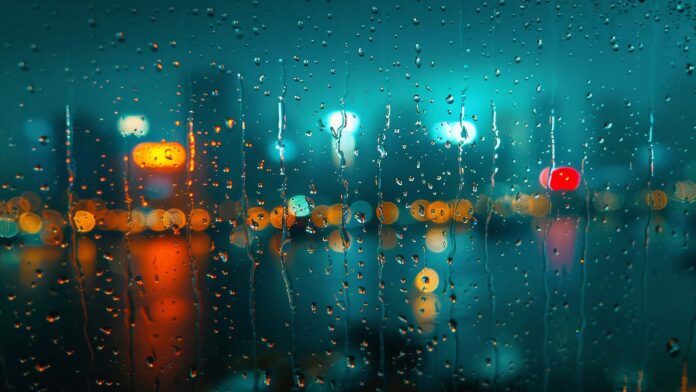What if rain could do more than irrigate fields or cool cities—what if it could power them too? A new technology based on the principle of segmented flow could transform rooftops and drainpipes into miniature renewable power stations, capturing every drop that falls from the sky. In Singapore, a research team has taken a key step towards this future. Meanwhile, another group of scientists is advancing triboelectricity to develop a new generation of hybrid solar panels.
How rain can generate electricity
Raindrops carry kinetic energy, but capturing it efficiently has long posed a technical challenge. The latest innovation is based on what researchers call “plug flow” or segmented flow—a configuration in which alternating segments of air and water move through a narrow tube.
As each droplet travels through the conduit, the interaction between water, air and the tube’s surface causes a separation of electrical charge. In short, electricity is generated from the contact and movement of different materials. Electrodes positioned at each end of the tube capture this energy and make it usable. The key lies in a precise combination of the tube’s internal design, its coating materials, and control over the flow itself.
A scalable, urban-friendly technology
Beyond the lab, the National University of Singapore has tested working prototypes capable of powering up to a dozen LEDs using a single installation. The tube, coated with an optimised polymer, allows droplets to generate small, repeatable bursts of electricity.
One of the most promising features is its modular design. These vertical units can be installed on gutters, rooftops, awnings or even façades—making use of existing structures already exposed to rain. Unlike micro-hydropower systems, which require flowing water, this design simply relies on rainfall.
Triboelectricity meets solar power
Segmented flow is not the only way to harness rain’s kinetic energy. Another promising example is the integration of triboelectric systems into solar panels. On rainy or overcast days, photovoltaic generation usually drops. But the same raindrops that block the sun can become allies—if their impact on the surface of the panel is put to use.
A team at Tsinghua University in Shenzhen, China, has developed transparent triboelectric coatings that can be applied directly to solar panels without interfering with their optical performance. These coatings produce electricity when raindrops strike them, creating small but usable charges.
The result is a hybrid solar panel capable of generating power from both sunlight and rain. While the energy produced from rain is lower than that from the sun, it provides a complementary source of power—extending the panel’s performance into previously unproductive weather conditions.
These coatings also help reduce the build-up of dust and debris, improving the panel’s self-cleaning ability and delivering more consistent output over time.
The challenges: real-world conditions and consistent performance
The main hurdle is replicating laboratory results in natural settings. Rainfall speed, volume and frequency vary significantly between regions and seasons, so systems must adapt to a wide range of environmental conditions.
Materials also need to withstand prolonged exposure to water, thermal fluctuations and the accumulation of particles. Durability and ease of maintenance will be key to determining long-term viability.
Since this technology generates small amounts of power per module, real-world applications will rely on linking multiple units. However, connecting them in parallel can introduce complications, such as signal interference or energy loss—issues researchers are already working to overcome.
One proposed solution is the “bridge array” layout, where tubes are arranged in a way that prevents interference between modules and allows the energy from each unit to be combined with minimal loss.
Beyond the lab: urban and social impact
The potential applications go far beyond domestic use. In public spaces—such as bus shelters or street furniture—these systems could power LED lights, air quality sensors or phone-charging points.
They could also play an important role in rural or remote areas where grid access is unreliable or non-existent. With minimal installation requirements and no need for hydraulic infrastructure, they offer a viable option for basic electrification in regions with frequent rainfall.
Even in agriculture and livestock farming—where many facilities lack access to the grid—rain-powered generation could support climate sensors, automated irrigation or warning beacons.
Source:


